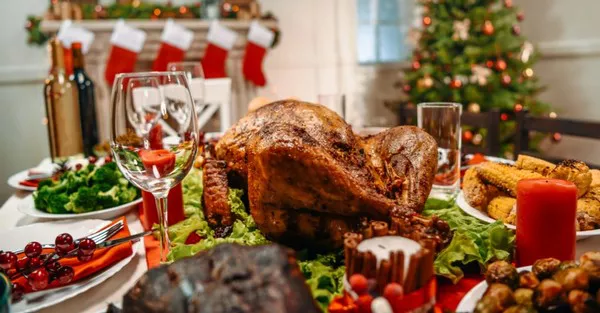As the festive season approaches, cultures around the world come together to celebrate with unique traditions and, of course, delicious food. In Italy, Christmas Eve, known as “La Vigilia,” holds a special place in the hearts of families as they gather for a feast that is rich in tradition and flavor. In this extensive exploration, we delve into the culinary delights that grace Italian tables on Christmas Eve, uncovering the recipes, customs, and stories that make this occasion truly special.
The Significance of La Vigilia:
While Christmas Day often steals the spotlight in many cultures, Christmas Eve is a time of anticipation and togetherness in Italy. La Vigilia, meaning “The Vigil” or “The Eve,” is celebrated with a festive dinner that often features a variety of seafood dishes. This culinary custom, known as the Feast of the Seven Fishes (Festa dei Sette Pesci), is a nod to the Catholic tradition of abstaining from meat on Christmas Eve.
The Feast of the Seven Fishes:
The Feast of the Seven Fishes is a culinary journey that varies from region to region, reflecting Italy’s diverse culinary landscape. While the exact origin of this tradition is debated, its popularity has grown, and it is now embraced by Italian-American communities as well. The number seven is believed to symbolize completeness and perfection, making the feast a fitting celebration of Christmas Eve.
See Also: Traditions & Symbolism of the 7 Fish for Christmas Eve
The Extravagant Menu:
Antipasti – A Seafood Prelude:
The Christmas Eve feast typically begins with an array of antipasti, offering a tantalizing preview of the seafood delights to come. These may include:
Baccalà Mantecato (Creamed Cod):
Salted cod is a staple in Italian Christmas Eve menus. Baccalà mantecato, a creamy spread made by whipping salted cod with olive oil and garlic, is often served on crostini.
Cozze Gratinate (Baked Mussels):
Mussels, a favorite of Italian coastal regions, are baked with breadcrumbs, garlic, and parsley, creating a flavorful and aromatic dish.
Calamari Fritti (Fried Calamari):
Lightly battered and fried calamari rings make for a crispy and delicious appetizer, often served with a side of marinara sauce for dipping.
Insalata di Mare (Seafood Salad):
A refreshing medley of seafood, such as shrimp, calamari, and octopus, tossed with lemon, olive oil, and herbs, adds a light touch to the antipasti spread.
Primi Piatti – Pasta Excellence:
The pasta course is a non-negotiable part of an Italian feast, even on Christmas Eve. Traditional dishes for this course include:
Linguine alle Vongole (Linguine with Clams):
This iconic dish features linguine pasta tossed with fresh clams, garlic, white wine, and a hint of chili flakes for a perfect balance of flavors.
Risotto ai Frutti di Mare (Seafood Risotto):
Creamy risotto takes center stage with the addition of an assortment of fresh seafood, such as shrimp, mussels, and calamari.
Gnocchi di Baccalà (Cod Gnocchi):
Pillowy gnocchi made with salted cod and served in a rich tomato or saffron-infused sauce provide a comforting and hearty option.
Secondi Piatti – Seafood Extravaganza:
The main course is a grand showcase of various seafood preparations, each bringing its unique flair to the Christmas Eve table:
Pesce al Forno (Baked Fish):
Whole fish, such as sea bass or bream, is often baked with a simple combination of olive oil, lemon, garlic, and herbs, allowing the natural flavors to shine.
Aragosta Fra Diavolo (Lobster Fra Diavolo):
Lobster takes center stage in this spicy tomato-based sauce, creating a decadent and festive dish.
Capitone Fritto (Fried Eel):
Fried eel, a delicacy in some regions, is enjoyed for its unique texture and flavor. It is often accompanied by a squeeze of lemon for brightness.
Stufato di Seppie (Cuttlefish Stew):
Cuttlefish, slow-cooked in a rich tomato sauce with garlic, onions, and white wine, creates a hearty and comforting stew.
Contorni – Sides and Accompaniments:
To complement the seafood-centric main courses, Christmas Eve feasts often feature a variety of side dishes, including:
Caponata:
This Sicilian eggplant dish, featuring a sweet and sour flavor profile, adds a burst of color and taste to the table.
Frittelle di Zucchine (Zucchini Fritters):
Light and crispy zucchini fritters, often seasoned with herbs and grated Parmesan, provide a delightful contrast to the seafood dishes.
Insalata di Rinforzo (Cauliflower Salad):
A refreshing cauliflower salad, dressed with olives, pickled vegetables, and olive oil, offers a crunchy and tangy element to the meal.
Dolci – Sweet Conclusions:
No Italian celebration is complete without a selection of sweet treats to end the meal. Christmas Eve is no exception, featuring an array of festive desserts such as:
Panettone:
A classic Italian Christmas sweet bread studded with candied fruits and raisins, panettone is often enjoyed with a glass of sweet wine.
Struffoli:
These small, honey-drenched dough balls are a Neapolitan specialty, forming a sweet and sticky centerpiece for the dessert table.
Roccamore:
A nutty and chocolatey dessert, roccamore features layers of nougat, almonds, and chocolate, creating a decadent treat for the holiday season.
Zeppole:
Deep-fried dough balls, sometimes filled with custard or ricotta cream, are a beloved treat during the Christmas season.
Regional Variations:
It’s important to note that the Feast of the Seven Fishes and Christmas Eve traditions can vary significantly across Italy’s diverse regions. Coastal areas may emphasize different types of seafood, while inland regions may incorporate local specialties into their festive menus.
Conclusion:
In conclusion, Italian Christmas Eve is a gastronomic celebration that brings families together to enjoy a lavish feast centered around the bounty of the sea. From antipasti to dolci, each course is crafted with care, reflecting the rich culinary heritage of Italy. As families gather around the table on La Vigilia, they not only savor delicious dishes but also create cherished memories that will be passed down through generations. The Feast of the Seven Fishes is more than a meal; it is a testament to the importance of family, tradition, and the joy that comes from sharing a delectable meal during the most wonderful time of the year.

